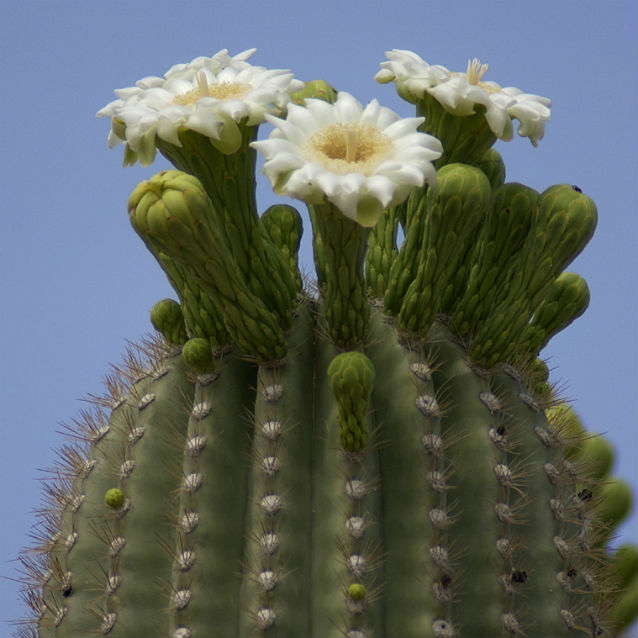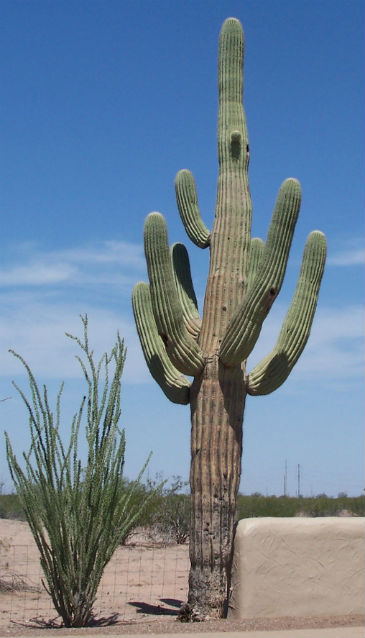The tall and mighty saguaro cactus is found throughout Arizona in the Sonoran Desert regions. Saguaro National Park highlights these large plants but fine examples of saguaros are found in many places. The saguaro is protected by Arizona State Law and destruction or theft can lead to a 4th class felony charge.
Without question, the biggest threat to the saguaro is our rapidly expanding human population. The Saguaro Cactus, Site Bulletin, Saguaro National Park
Overview

NPS
The saguaro cactus, Carnegiea gigantea, is the signature plant for the Sonoran Desert. It is found, naturally, in no other environment. However, they do not grow in all parts of the Sonoran Desert. The range of the saguaro is limited by freezing temperatures in winter. Saguaros are also limited by elevation. They are generally found growing from sea level to approximately 4,000 feet in elevation. Saguaros growing higher than 4,000 feet are usualy found on south facing slopes where freezing temperatures are less likely to occur or are shorter in duration.
How do saguaros grow?

NPS
The saguaro is a slow-growing cactus. In Saguaro National Park, studies indicate that a saguaro grows between 1 and 1.5 inches in the first eight years of its life.
These tiny, young saguaros can be hard to see, as they grow under the protection of a "nurse tree," most often a palo verde, ironwood, or mesquite tree. As the saguaro continues to grow, its much older nurse tree may die. Some scientists believe that competition from the saguaro may lead to the death of the nurse tree by taking water and nutrients from the soil in the immediate area.
As a saguaro beings to age, growth rates vary depending on climate, precipitation, and location. We do know that the period of greatest growth in a saguaro cactus is from unbranched to branched adult.
At Saguaro National Park, branches normally begin to appear when a saguaro reaches 50–70 years of age. In areas of lower precipitation, it may take up to 100 years before arms appear.
When a saguaro reaches 35 years of age, it begins to produce flowers. Though normally found at the terminal end of the main trunk and arms, flowers may also occur down the sides of the plant. Flowers will continue to be produced throughout a saguaro's lifetime.
An adult saguaro is generally considered to be about 125 years of age. It may weigh 6 tons or more and be as tall as 50 feet. The average life span of a saguaro is probably 150–175 years of age. However, biologists believe that some plants may live over 200 years.
Last updated: September 11, 2015
